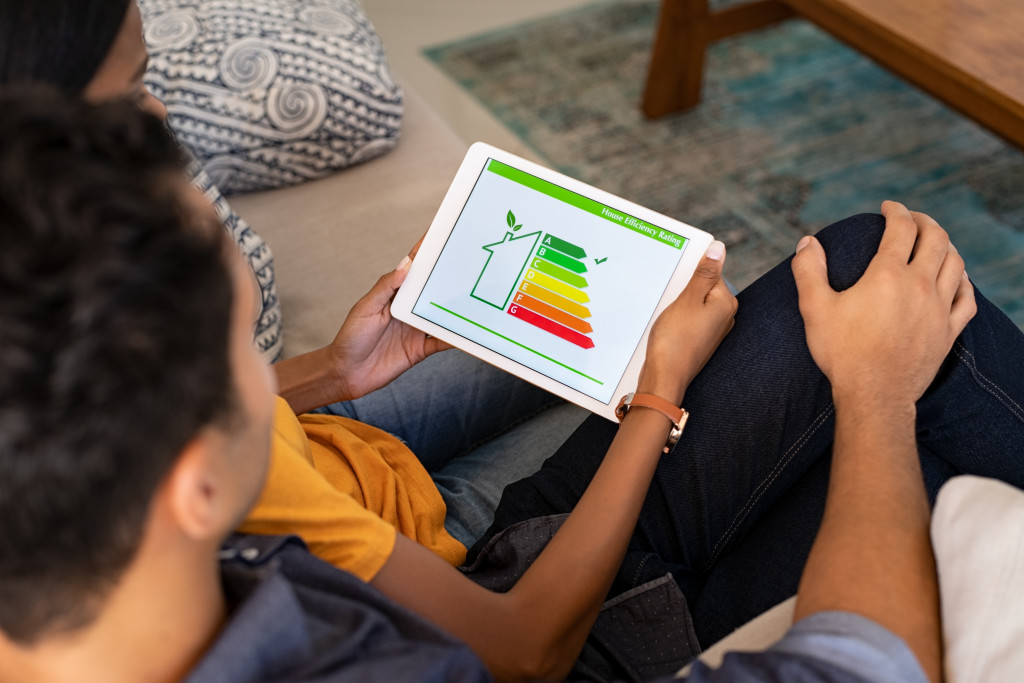- Buildings contribute to 30% of global greenhouse emissions.
- Sustainable buildings can increase property values and have higher occupancy rates.
- Regulations and industry standards are increasing, requiring the adoption of sustainable practices.
- Energy-efficient appliances, smart building management systems, and water-efficient devices can reduce operational costs.
- Demonstrating responsibility with green policies boosts corporate reputation and attracts talent.
The real estate industry enormously impacts the environment. As a result, sustainable building and property management practices have become increasingly important. Sustainability is not only good for the planet, but it also brings benefits to the bottom line of the industry. Here’s what you need to know about real estate’s carbon footprint, why it’s the industry’s future, and what you can do to let your properties join this trend.
Carbon Emissions of The Real Estate Industry
It’s estimated that 30% of overall greenhouse emissions come from buildings. Real estate development, construction, and operation consume vast energy resources like gas, electricity, and oil. It’s estimated that over 80% of the energy used in buildings comes from non-renewable sources like fossil fuels. Here are some of the reasons why sustainability can be beneficial for the industry:
Increased Building Value
Sustainable buildings command higher prices and rents compared to traditional ones. A study by the University of Cambridge showed that energy-efficient buildings sold at a premium of 10% to 31%. Sustainable buildings also have lower operational costs, translating into higher net operating income and property values. Given the increasing demand for green buildings, implementing sustainable practices supports the environment and generates revenue and profits.

Attraction and Retention of Tenants and Employees
Sustainability has a positive impact on occupant health, comfort, and productivity. Energy-efficient buildings provide better indoor air quality, reduce noise pollution, and improve natural light, which translates into higher satisfaction of tenants. By delivering health and wellness benefits, sustainable properties have a competitive advantage in attracting talent and maintaining tenant satisfaction, leading to higher occupancy rates and lower tenant turnover.
Compliance with Regulations and Industry Standards
Governments and industry organizations are implementing sustainability regulations and best practices. Environmental regulations and consumer demands are increasing. Adopting sustainable practices ensures compliance with regulatory requirements and minimizes operational risks associated with legal and regulatory cases.
Reduction of Operational Costs
Sustainable practices aim to reduce energy and water consumption, lowering operating costs. Energy-efficient appliances, smart building management systems, and water-efficient devices can reduce an operating budget. For example, installing LED lighting can cut electric bills by up to 75%. Intelligent HVAC systems use AI algorithms to optimize energy efficiency, leading to a 30% reduction in energy use.
Increase in Social and Corporate Responsibility
Sustainability emphasizes social and corporate responsibility. Adopting sustainable practices differentiates companies from their competitors. Organizations that prioritize sustainability are seen as responsible and reputable. Real estate organizations can demonstrate their role in sustainable development and property management by adopting green policies.
How to Make Your Properties More Sustainable
Now you know the benefits of implementing sustainability practices, but how can you implement them? Here are some tips for making your properties more sustainable:

Get Your Properties Audited
First, knowing how much energy your properties are using is essential. You can get a home energy audit service to identify where your properties can save energy and resources. They do this by connecting to your building’s network and using sensors to measure energy consumption. This can then bring an accurate measurement of the overall power consumption of your building, which you can then adjust if you want to reduce your properties’ carbon footprint.
Audit Your Building Materials
It’s also important to check the materials used in your construction projects. Look for green-certified products like low VOC paint, recycled drywall, and renewable flooring material. This will reduce the environmental impact of the construction process and produce a healthier indoor environment for occupants.
Update Your Buildings’ Infrastructure
Changing the building’s structure, such as installing insulation or double-paned windows, can help reduce energy consumption. You can also update appliances and lighting with more energy-efficient models such as LED lighting, smart thermostats, and EnergyStar-rated appliances, reducing energy use by up to 30%.
Create a Waste Management Plan
Having a waste management plan in place is also essential. This includes identifying recycling centers for materials that cannot be reused and setting up composting bins for organic materials. Additionally, you can install water-efficient fixtures like low-flow toilets and taps to reduce water consumption.
These are just a few ways to make your properties more sustainable. By implementing these practices, you not only create a healthier environment but also save money on energy costs and increase the value of your properties. With sustainability being the future of real estate, it’s never too late to join this trend.
